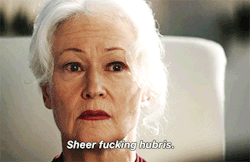What's Up With Warrior Galadriel? Is This in the Books?
Over the years, Tolkien adapters have had to get creative in order to include his female characters in the action.
Liv Tyler's Arwen making a riverbank stand against the Nazgul in defense of Frodo and the very existence of
Evangeline Lilly's warrior elf, Tauriel? All invented by Peter Jackson. But Eowyn's "but no living man am I!" showdown with the witch-king of Angmar in
The Return of the King is straight out of the books and shows that Tolkien was at least somewhat interested in women who pick up swords. As does his description of Galadriel during the many thousand years of her long youth. Tolkien claimed young Galadriel could match strength with most male counterparts, and in a
1973 letter, wrote, "She was then of Amazon disposition and bound up her hair as a crown when taking part in athletic feats." This is how she got her name, Galadriel, which means "maiden crowned with gleaming hair." In
The Unfinished Tales it says, "[Galadriel] looked upon the Dwarves also with the eye of a commander, seeing in them the finest warriors to pit against the Orcs."
"She's full of piss and vinegar and she's got a sword that's broken because she's killed so many orcs," McKay says of their version. "This young hot-headed Galadriel…how did she ever become that elder stateswoman?" What's more important than Galadriel's armor and weaponry is the turmoil of emotions we see raging inside her, having already survived multiple attacks by Sauron and his predecessor, Morgoth, and losing her brothers in the process. This internal conflict still lingers in the striking
Fellowship of the Ring sequence where, tempted by the One Ring, a
booming Cate Blanchett goes photo-negative. Tolkien writes her this speech: "In place of the Dark Lord you will set up a Queen. And I shall not be dark, but beautiful and terrible as the Morning and the Night! Fair as the Sea and the Sun and the Snow upon the Mountain! Dreadful as the Storm and the Lightning! Stronger than the foundations of the earth. All shall love me and despair!"
The Rings of Power makes a direct nod toward this moment when, as Galadriel first meets the human character Halbrand, he says a line that echoes what Tolkien had her say to Frodo: "The tides of fate are flowing." In or out, Halbrand wonders. In the
History of Middle-earth, Tolkien describes the One Ring as "all that Galadriel had desired in her youth." She has a lifelong flirtation with the darkness inside of her, and even in her later years she remains one of the few people Sauron fears. It's what makes her much more complex than a simple and serene lady of the woods. If you want to know if
Morfydd Clark is capable of matching Blanchett's terrifying turn, check out her blissfully unhinged performance in the horror film
Saint Maud.














